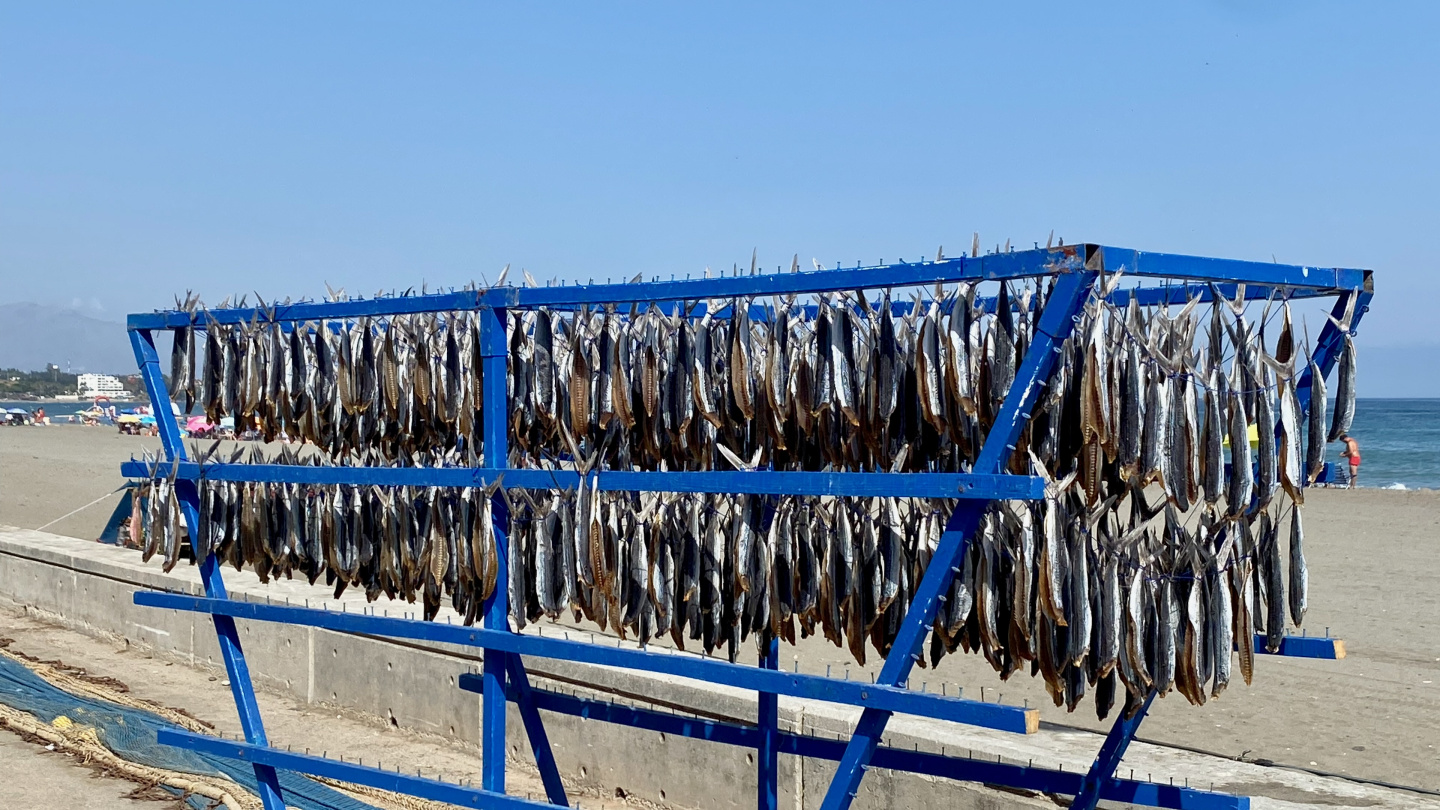Costa del Sol is one of the most popular and well-known holiday destinations in Spain. Even in winter, the temperature is like summer days in Northern Europe. Thousands of people from Central and Northern Europe have either bought a vacation home or permanently moved to the coast of sunshine.
For us, the Mediterranean coast of Southern Spain, Costa del Sol, was relatively unknown, with only one previous trip to Malaga. Costa del Sol is a 150-kilometer stretch of the southern coast of Spain, between La Linea and Nerja.
After returning from the African continent to Europe, we had few weeks to visit in a couple of places, making our sailing a pleasant and relaxed autumn cruise along the southern coast of Spain through eastern Andalusia.
Many have said that Costa del Sol is uninspiring when it comes to sailing. There are no sheltered anchorages along the coast, and the Mediterranean swell makes anchorages restless except on completely windless days, which there are a surprisingly few.
The gap between the mountains and the shore is rather narrow, so the entire coastline is filled with holiday homes and apartment hotels in an uninterrupted chain.
We thought we would explore the Costa del Sol area this year, and next season we can then skip this area and sail further into the Mediterranean. Although beach life on the Costa del Sol is vibrant, it is really not very inspiring in terms of sailing.
From Ceuta, our first destination was Estepona, a journey of 27 nautical miles. It was exciting to sail from the Mediterranean side of the Pillars of Hercules, making our second intercontinental sailing of the summer from Africa to the old continent, arriving for the first time with Suwena on the Mediterranean sea.
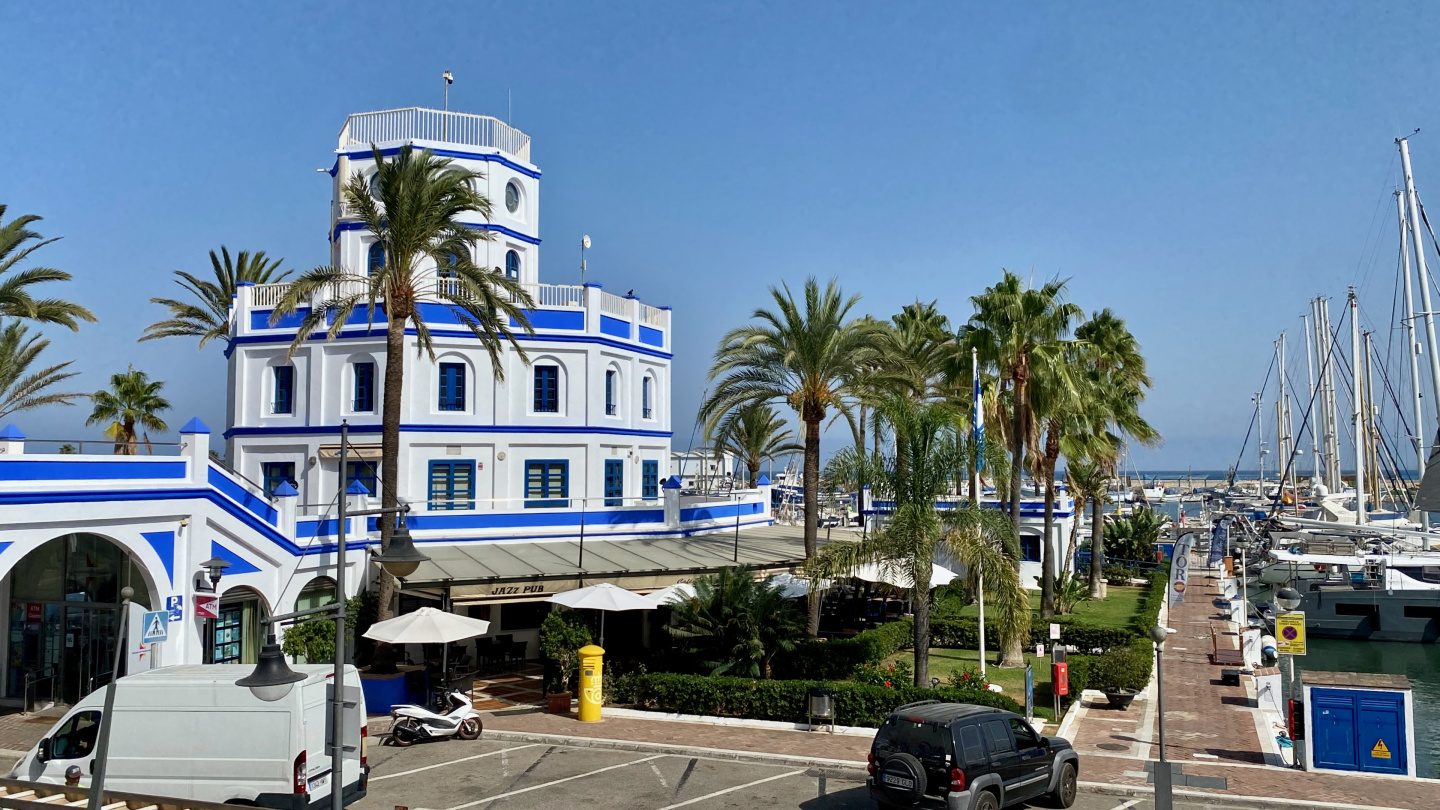
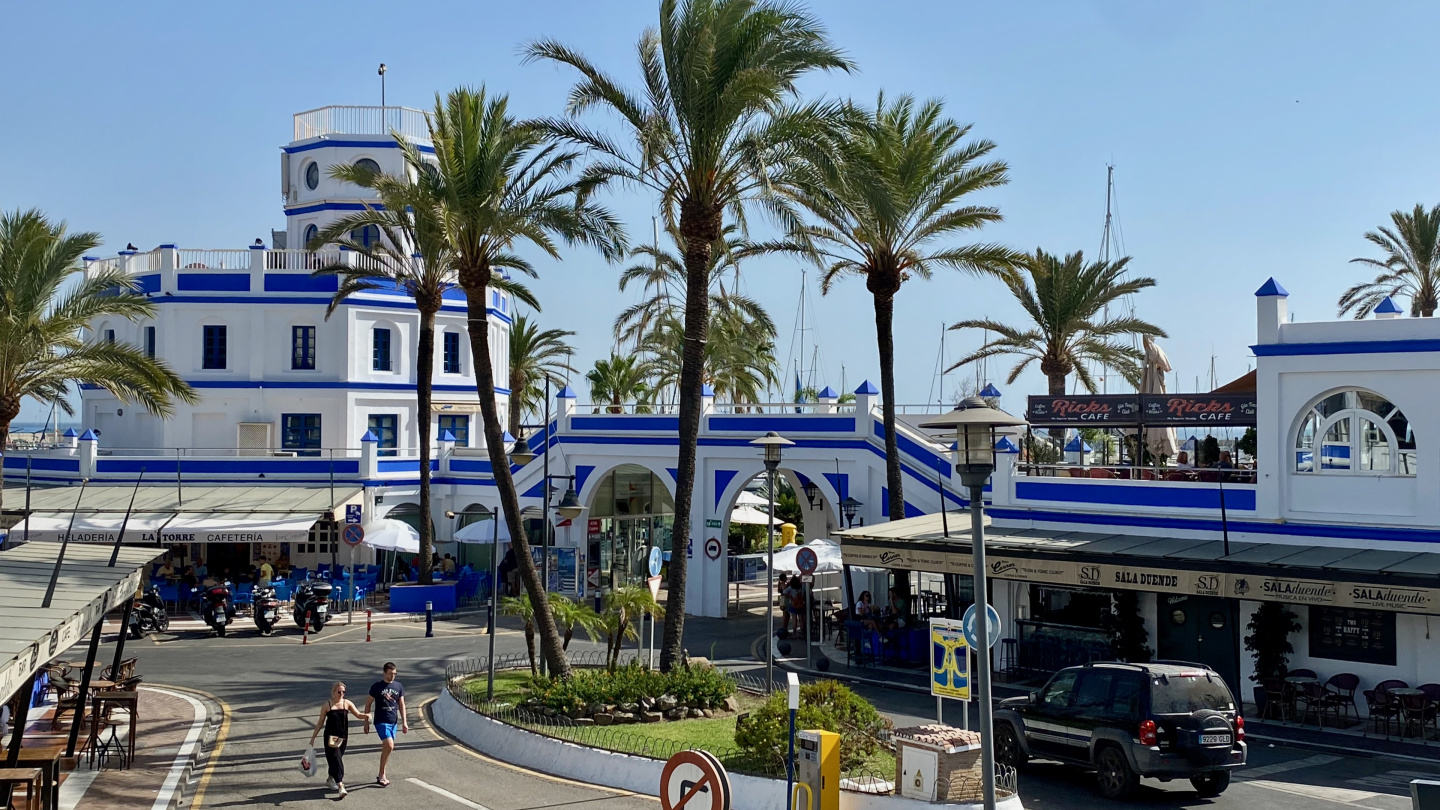
When sailors on the Atlantic coast meet and head south, the standard question is, “do you turn right or left?” Now we can finally say that turning left has led us to the Mediterranean!
Estepona is a cozy Andalusian seaside town with just under 70,000 inhabitants. A long promenade leads from the harbour towards the old town. In total Estepona has over 20 kilometers of waterfront.
The marina is located 1.5 kilometers west of the old town, making it a very nice walk along the promenade to the historic center, where you will find yourself on the Plaza de las Flores square, the heart of Estepona.
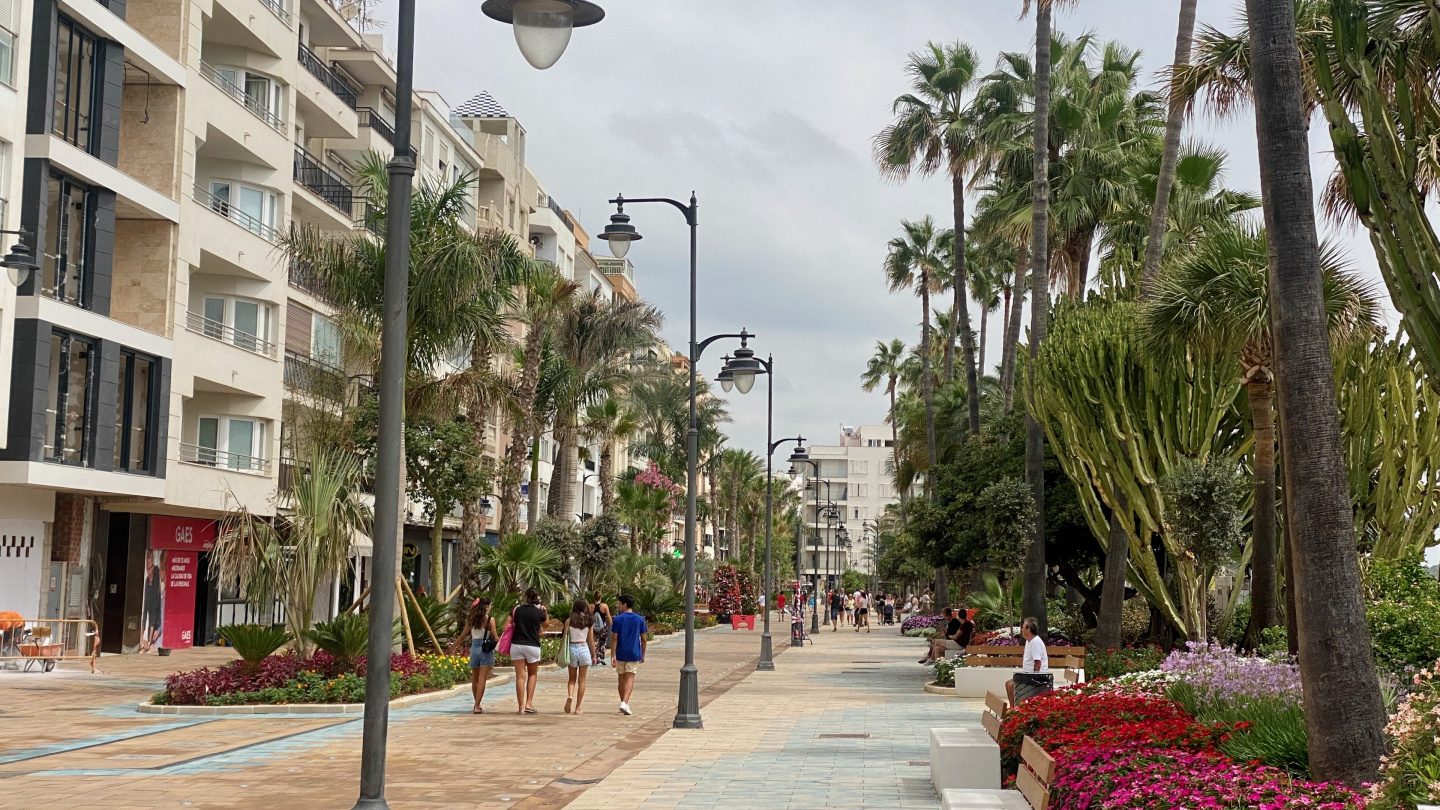
The entire waterfront is full of restaurants and cafes. There is no shortage of lunch and dinner spots here, and along the beach, you will find numerous Andalusian chiringuito beach bars offering a variety of fish and seafood.

Estepona is a truly charming little town with low buildings, light-colored houses adorned with wall flower decorations, murals, and orange trees in the center. It was a pleasure to stroll around and enjoy a summer day. It was a delightful day walk from the harbour to the old town, sitting and watching passersby. Estepona has retained its own idyllic, even sleepy, peaceful atmosphere.


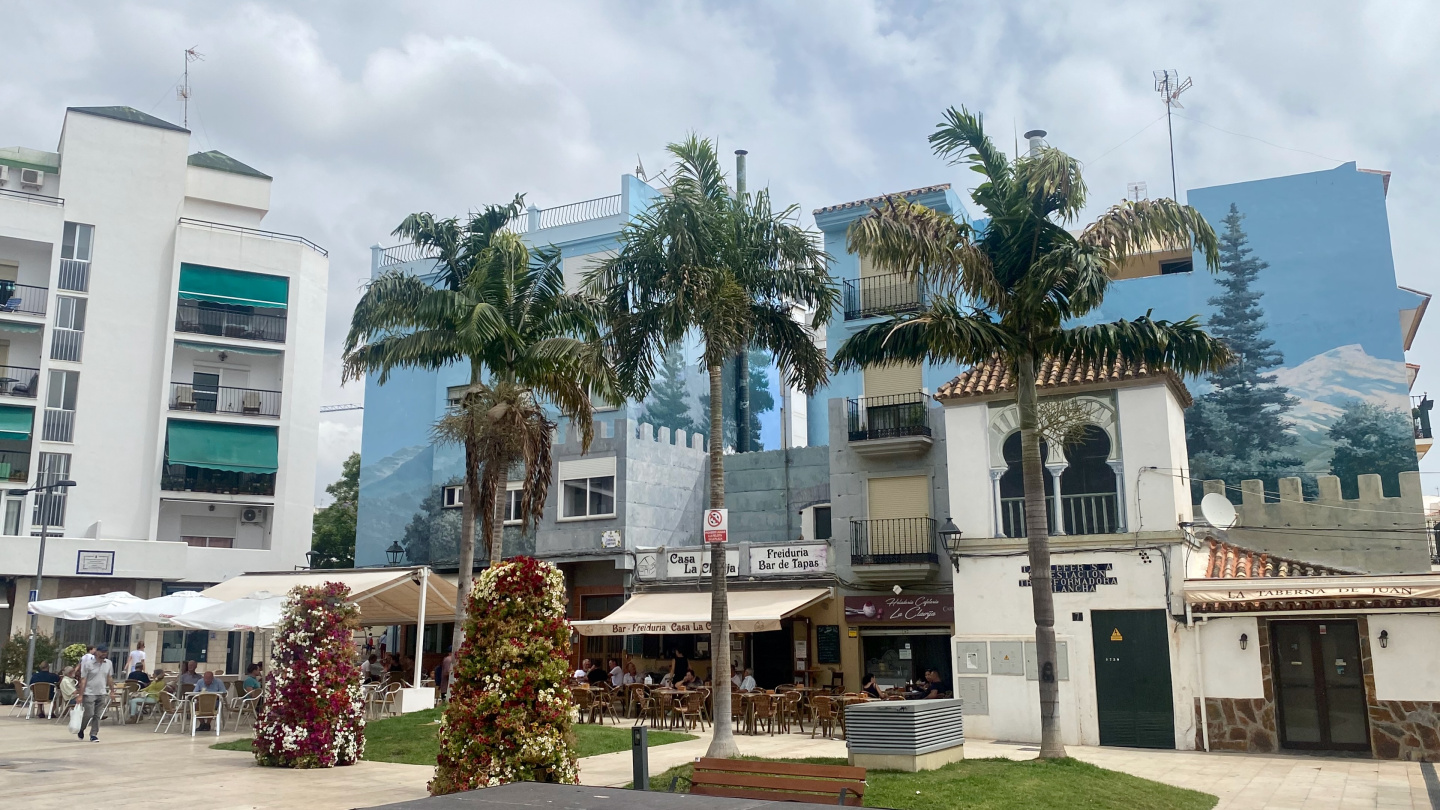

Estepona’s marina is located in the middle of the resort with numerous restaurants, so there’s no need to worry about cooking onboard in Estepona. There is also a functional fishing harbour, and fish processing takes place just east of the marina. Thus when the wind is blowing from the east, everyone notices without a doubt that the day’s catch has arrived in the harbour. 🙂
